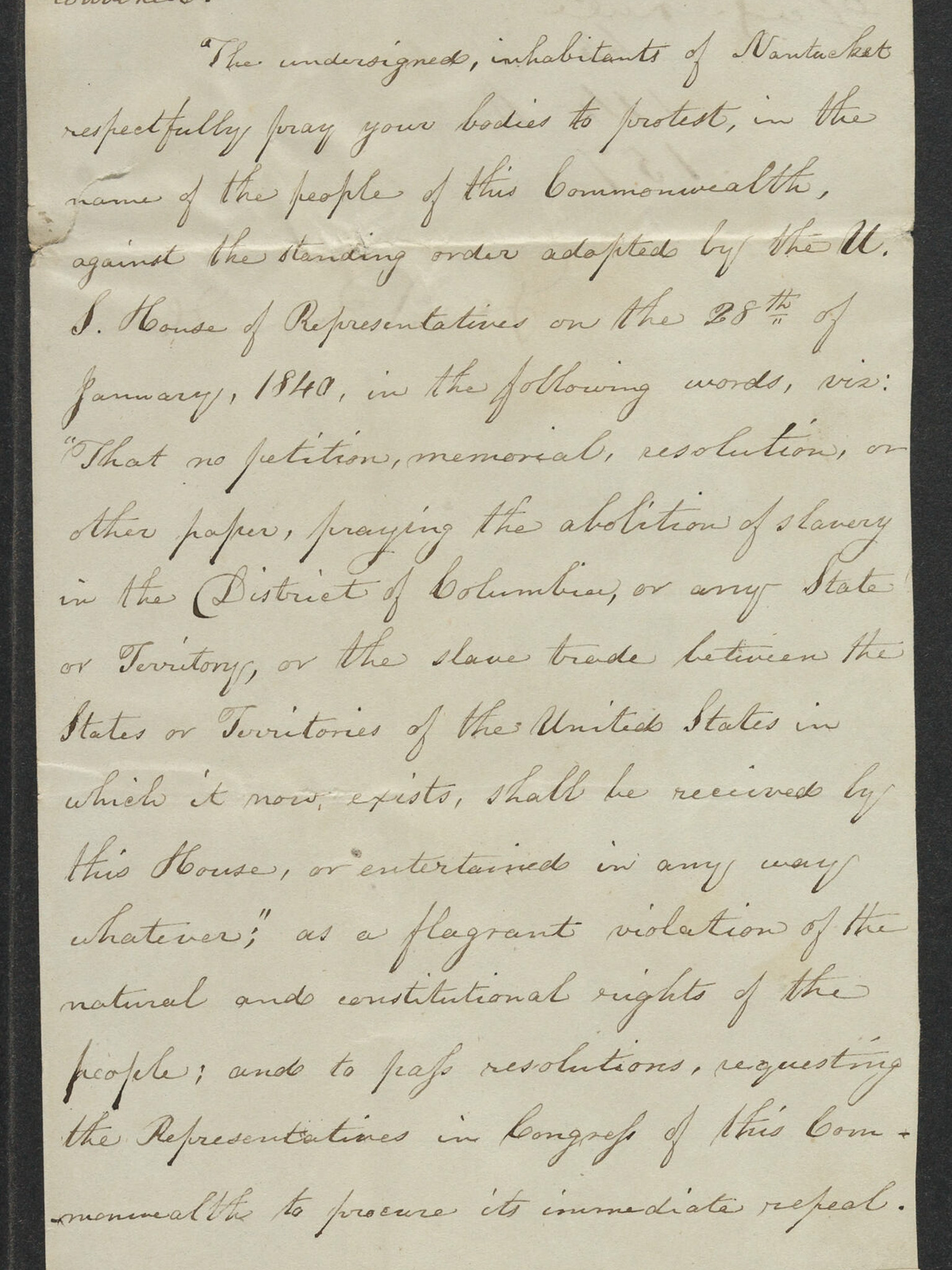EVENT
A Strategy to End Slavery

In response to the flood of anti-slavery petitions (130,000 between 1836-37 alone) arriving in D.C., Congress placed a complete ban on any discussion of slavery-related petitions. Lasting between 1837–1844, the “Gag Rule” clearly demonstrated the tremendous political power of the slave states in Congress. In response, anti-slavery activists added additional emphasis to their work at the state level, focused on containing and eventually eliminating slavery. Among other tactics, this strategy included fighting the admission of new slave states into the union and banning slavery on Federal lands. (1) Wampanoag anti-slavery activists participated in this work, petitioning their state representatives to vote against the annexation of Texas and Florida, and to take action to end slavery in the District of Columbia—the seat of national government (2,3,4).
1. Voegeli, V. Jacque. “Free But Not Equal: The Midwest and the Negro During the Civil War” Chicago Press, 1967.
2. House Unpassed Legislation 1840, Docket 788, SC1/series 230, Petition of Robert B. Baynes. Digital Archive of Massachusetts Anti-Slavery and Anti-Segregation Petitions, Massachusetts Archives, Boston MA
3. Digital Archive of Massachusetts Anti-Slavery and Anti-Segregation Petitions, Massachusetts Archives, Boston MA. Petition subject: Against the admission of Florida as a slave state
4. Digital Archive of Massachusetts Anti-Slavery and Anti-Segregation Petitions, Massachusetts Archives, Boston MAPassed Resolves; Resolves 1838, c.34, SC1/series 228, Petition of William Hart
Image: Nantucket Petition against the Gag Rule (Massachusetts Archives. http://nrs.harvard.edu/urn-3:FHCL:10956357)


